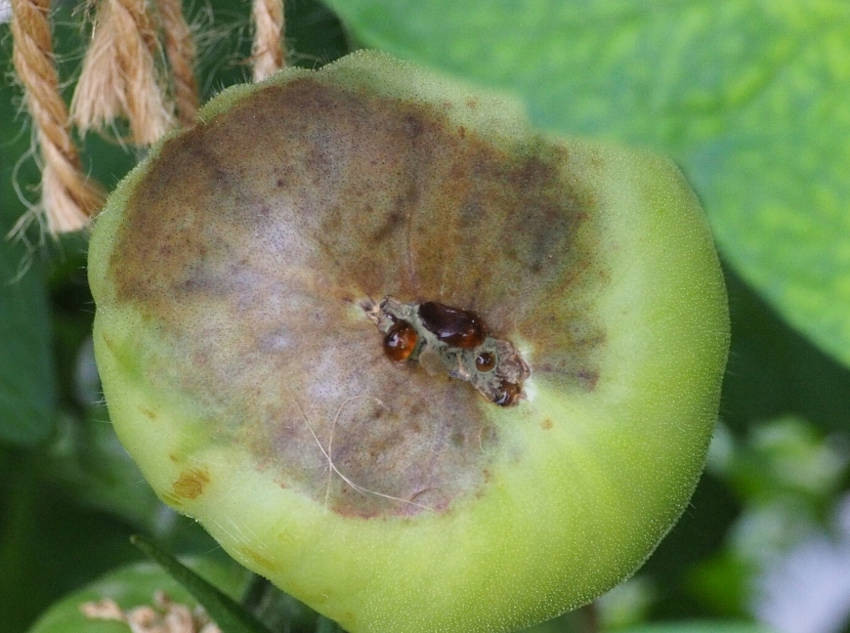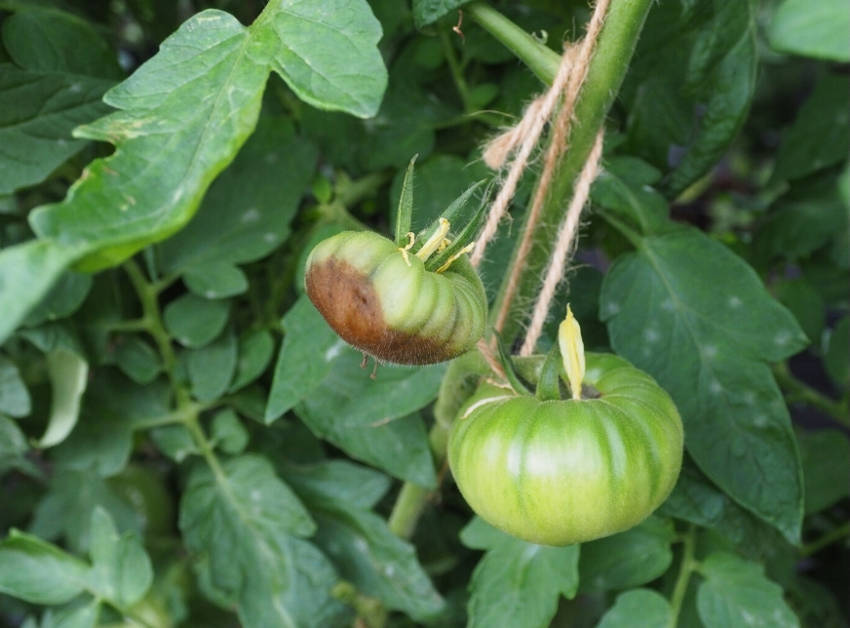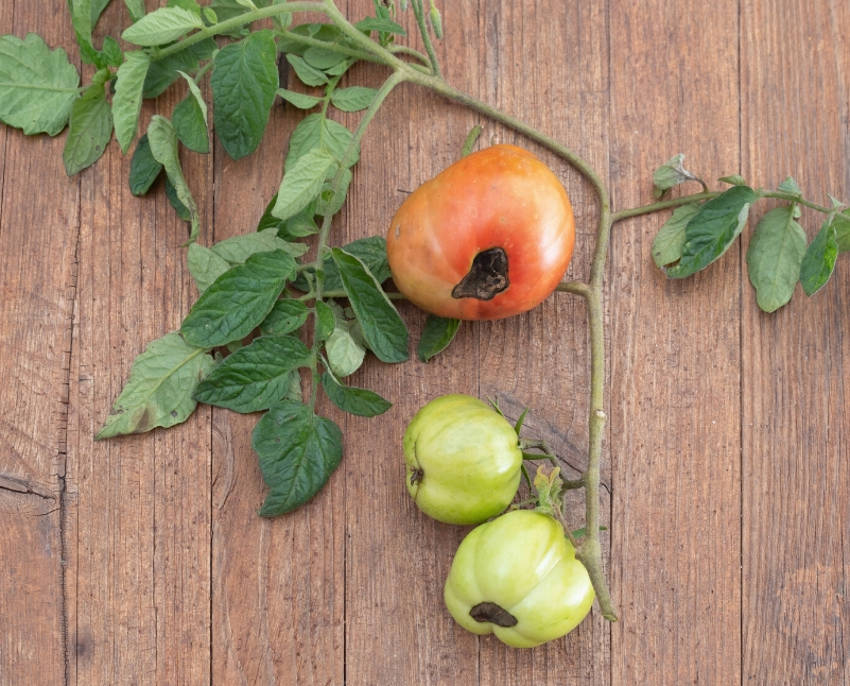how to fix blossom end rot
It's an experience most tomato growers will encounter at some point. The excitement of the first young fruits sprouting is swiftly followed by disappointment, when they begin to discolour from the bottom end upward. The baby tomatoes look half-rotten, decidedly unhealthy, and far from appetising.
This condition is known as blossom end rot, and while it's most commonly seen in tomatoes, it also crops up in capsicum, chilli, squash, eggplant, cucumbers, and other fruiting plants at the watery end of the spectrum.
Diagnosing Blossom End Rot
Blossom end rot usually appears in the early stages of fruit formation. At the start, the discolouration is usually beige or yellow, and the affected areas are watery and tender to the touch.
As the rot progresses, it expands and grows darker and tougher, with the fruit appearing shrunken and withered under the skin. Eventually, it can cover the entire bottom half of the fruit. Occasionally, it can also be accompanied by browned and curling leaf tips around the affected fruits.
What Causes Blossom End Rot?
When you spot blossom end rot, it's important to remember that it isn't caused by infection, fungus, or pests. It might look unsightly, but the problem won't spread around your garden to endanger other plants.
The fundamental cause is a lack of calcium in the growing fruit, and when this deficiency is solved, the afflicted plant can go on to thrive and produce perfect fruits later in the season.
The missing calcium isn't necessarily a result of poor soil conditions. Although the mineral is essential for healthy plant growth, it's only required in relatively small amounts, and all but the most infertile soils will usually have enough.
More likely, the problem is that the plant can't make full use of whatever calcium is available, and this can be for several reasons.
- Overwatering or heavy rain dilutes the available calcium, and the plant can't absorb it quickly enough to meet its needs.
- Underwatering or inconsistent watering can put the plant under stress, disrupting nutrient take-up across the board, with blossom end rot being the most quickly obvious result.
- High acid or alkaline levels in the soil will lock up nutrients, calcium included, making them unavailable to the plant's roots.
And perhaps most commonly, high levels of nitrogen in the soil can cause calcium deficiencies in two ways. First, excess nitrogen causes fast, abundant leafy growth which diverts nutrients away from the fruit, causing abnormal development.
Second, too much nitrogen locks the soil's calcium into a salt form which the plant's roots are unable to readily absorb, even if there are chemically high levels present.
Prevention and Control
An emergency measure for treating blossom end rot is to dab or spray a diluted calcium feed directly onto the plant's leaves, in a process known as foliar feeding. This won't do anything to rescue the already affected fruits, but can reduce the risk for any that develop later.
But in any case, once you spot the problem, pick off all the rotting fruits so that the plant can concentrate its energies into the unblemished ones. The affected fruits are harmless, and can even be cleaned up and eaten, but most people find the compost heap is a more suitable method of disposal.
Most of the plants affected by blossom end rot have a long potential fruiting season, so all's not lost. The important point is to solve the underlying conditions that caused the end rot, so that later fruits are unspoiled. Here are the four most important areas to concentrate on.
- Rule Out or Resolve Soil Deficiencies
Consider having your soil tested for its nutrient profile. If this shows up a calcium deficiency, you can correct it for next year by adding a calcium-rich liquid feed before sowing in spring. You can try boosting calcium content immediately, but this is unlikely to work quickly enough to save your harvest.
Nonetheless, if you have a slightly acidic soil, feed products based on lime or dolomite will help balance its pH as well as boosting calcium. If your soil already has a balanced pH, then neutral gypsum makes a better choice.
- Careful Fertiliser Use
Take care over fertiliser use, especially with feeds that are rich in nitrogen. Only use them when they're needed, and consider using a lowered-nitrogen formulation with added calcium just to be on the safe side.
- Improve Soil Quality
However, improving your soil quality will provide safer, longer-term results than being liberal with fertilisers. Improve both drainage and nutrient content by digging in plenty of organic matter, such as homemade compost or well-rotted manure.
Also, check that your soil's pH is within reasonable bounds, and take steps to correct it if necessary.
- Extra Watering Care
Lastly, consider whether you need to up your watering game. If your plants are prone to blossom end rot, it's vital to water regularly but sparingly rather than applying sporadic drenchings.
A consistent watering routine can be enhanced further by using a mulch to keep moisture in the soil, especially in hotter climates or exposed, windy areas.
Blossom end rot is a very common condition, and while it might have a dramatic appearance, it's not dangerous and is fairly easy to deal with. As always, giving your plants the best and most natural conditions to grow in will usually solve the problem, without the need for chemicals or overcomplicated treatment programs.




how to fix blossom end rot
Source: https://www.theseedcollection.com.au/What-is-Blossom-End-Rot-and-How-Can-You-Cure-It
Posted by: rhoadshimern.blogspot.com

0 Response to "how to fix blossom end rot"
Post a Comment